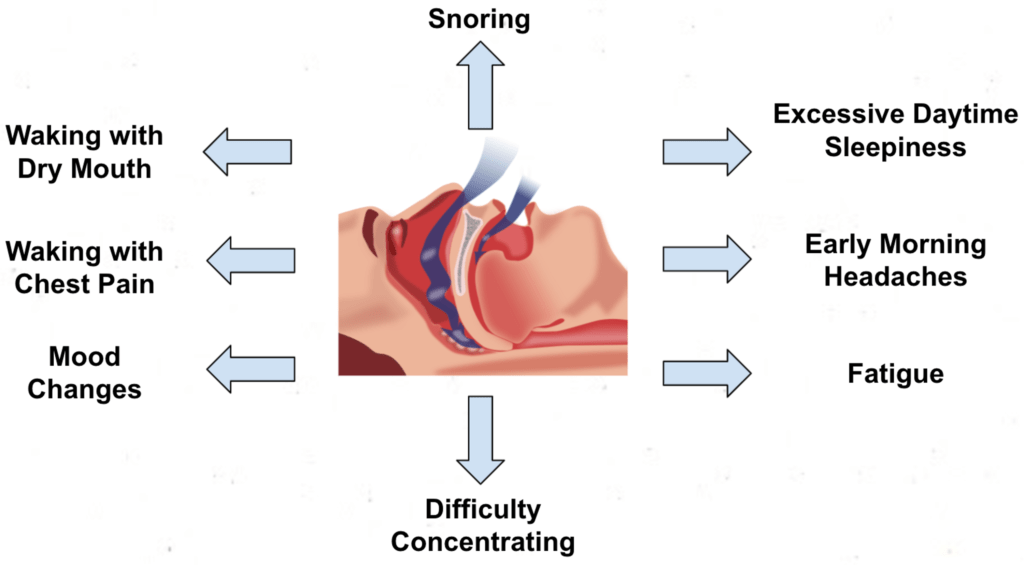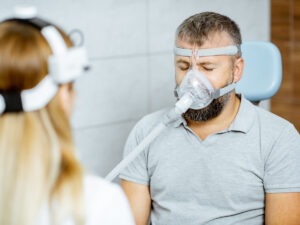Breathing repeatedly stops and begins while a person is asleep; this condition is known as sleep apnea and can be a risk. It affects millions of people worldwide and can lead to a range of health problems if left untreated. In this blog , we’ll take a closer look at everything you need to know about sleep apnea, including its causes, symptoms, diagnosis, and treatment options. Looking for the best orthodontics of san mateo? We have the perfect option for you. Visit Alborzi Orthodontics.
Causes of Sleep Apnea
There are two main types of sleep apnea: obstructive sleep apnea (OSA) and central sleep apnea (CSA). OSA is the more common form and is caused by a physical blockage of the airway during sleep. This can be due to factors such as obesity, enlarged tonsils, a deviated septum, or a narrow airway.
CSA, on the other hand, is caused by a lack of proper signals from the brain to the muscles that control breathing. This type of sleep apnea is less common and is often associated with underlying medical conditions such as heart failure, stroke, or neurological disorders.
Symptoms of Sleep Apnea

The most common symptom of sleep apnea is loud snoring, which is often accompanied by gasping or choking sounds as breathing resumes after a period of apnea. Other symptoms may include:
-
Excessive daytime sleepiness
-
Morning headaches
-
Difficulty concentrating
-
Irritability or mood swings
-
Dry mouth or sore throat upon waking
-
Restless sleep or insomnia
-
High blood pressure
-
Nighttime sweating
If you or a loved one is experiencing these symptoms, it’s important to speak with a healthcare professional as soon as possible. In case you’re looking for the best damon clear, visit Alborzi Orthodontics.
Diagnosis of Sleep Apnea
A diagnosis of sleep apnea typically involves a sleep study, which can be done either at home or in a sleep clinic. During the study, various sensors are attached to the body to monitor things like brain activity, heart rate, and breathing patterns. This data is then used to determine the severity of the sleep apnea and the best course of treatment.
Treatment of Sleep Apnea

Treatment for sleep apnea can vary depending on the severity of the condition and the underlying cause. In many cases, lifestyle changes such as weight loss, quitting smoking, and avoiding alcohol or sedatives before bed can help alleviate symptoms.
For more severe cases, a continuous positive airway pressure (CPAP) machine may be recommended. This device delivers a steady stream of air through a mask worn over the nose or mouth, helping to keep the airway open during sleep.
Surgical options may also be considered in certain cases, such as removing enlarged tonsils or adenoids, or correcting a deviated septum.
How Orthodontic Treatment Helps with Sleep Apnea!
Orthodontic treatment can help with sleep apnea in several ways. Firstly, it can help to widen the airway by realigning the teeth and jaws, allowing air to flow more freely during sleep.
Secondly, it can help to correct any underlying structural issues that may be contributing to sleep apnea, such as a narrow palate or misaligned jaw. By addressing these issues, orthodontic treatment can reduce or eliminate the need for other more invasive treatments, such as surgery or a continuous positive airway pressure (CPAP) machine.
Conclusion
Sleep apnea is a common and potentially serious sleep disorder that can lead to a range of health problems if left untreated. If you or a loved one is experiencing symptoms such as loud snoring, excessive daytime sleepiness, or morning headaches, it’s important to speak with a healthcare professional as soon as possible. With the right diagnosis and treatment, however, most people with sleep apnea are able to achieve a better night’s sleep and improve their overall health and quality of life.
